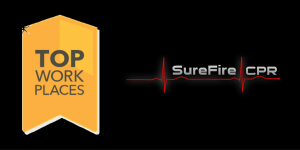First aid and CPR education is important for anyone, especially those who care for children or other adults. Teenagers who may babysit or spend time with elderly grandparents should learn first aid and CPR in order to prepare for emergencies – on the job or off.
Some of the top things for teens to know about babysitting emergencies:
- Know the full address of the home where you’re babysitting in case you need to call emergency services.
- Be sure to have a list of emergency numbers, including poison control, as well as other contact numbers that are easily accessible.
- Don’t pat a child who is choking on the back or put your finger in his or her mouth.
- Don’t do CPR or the Heimlich maneuver unless you’ve been properly trained.
- Be aware of the fire emergency plan in case you and the kids need to leave quickly.
- Look for any poison dangers that may be accessible.
- Ask about any food allergies.
SureFire CPR is a leading CPR and first aid instruction company that serves the greater Southern California area. SureFire trainers use the most realistic training equipment on the market to train firefighters, paramedics, lifeguards, ER nurses and EMTs.
To sign up for Pediatric Emergency Assessment, Recognition and Stabilization, as well as general first aid and CPR classes, call 888-277-3143 or visit www.surefirecpr.com.








